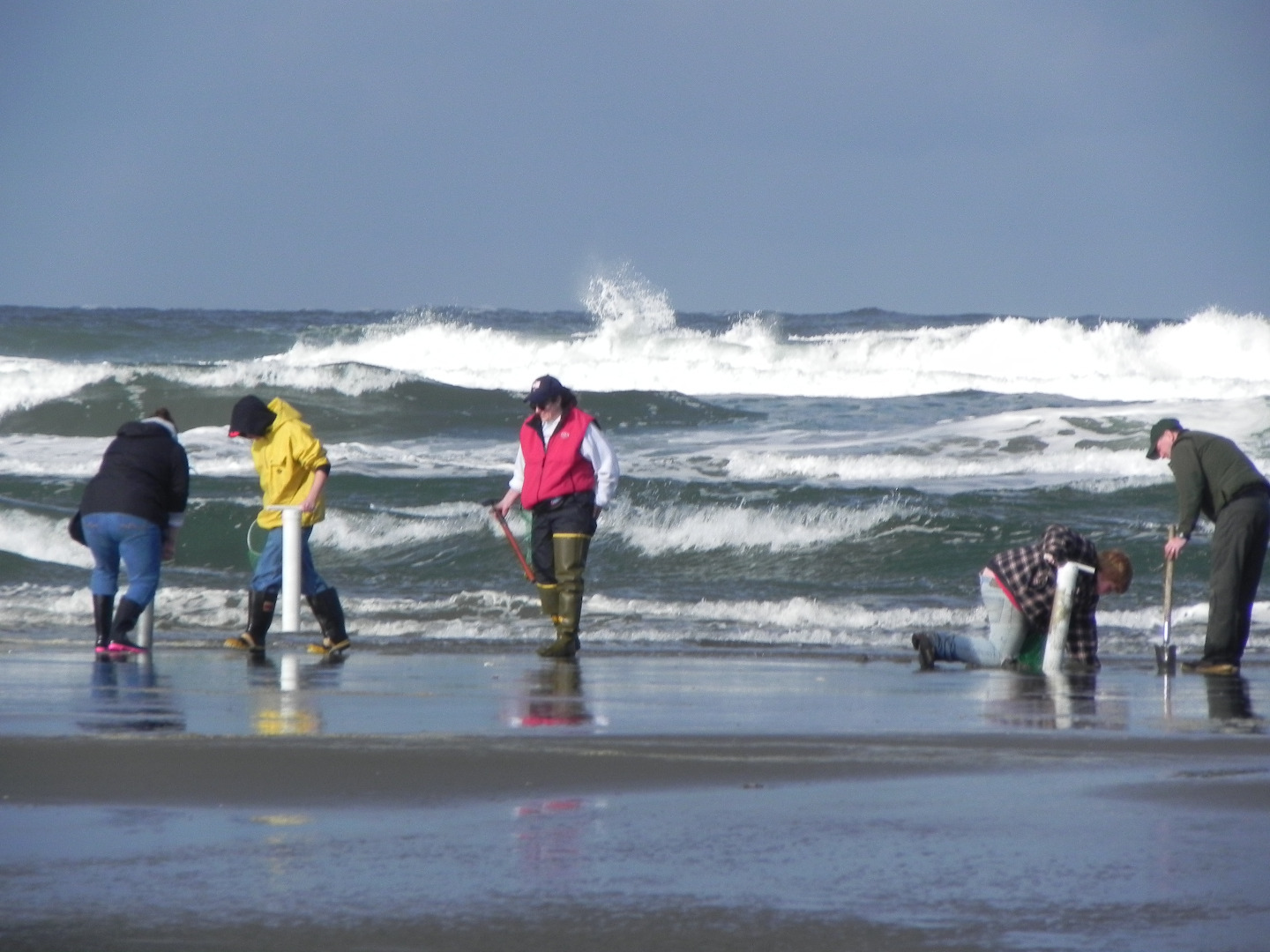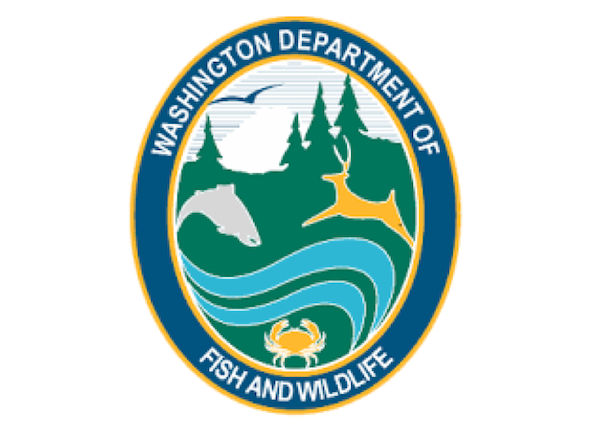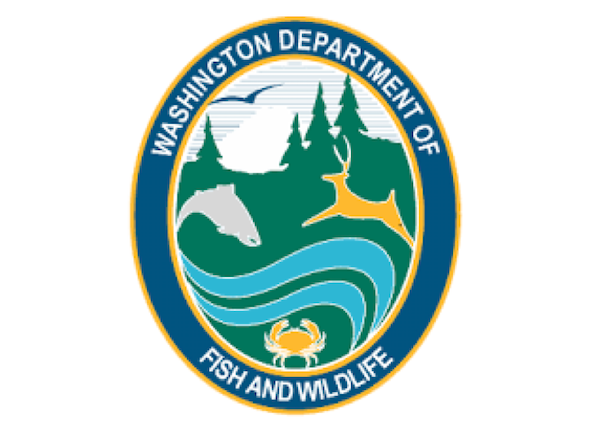Fish Report for 3-3-2022
March 2022 Weekender Report

by WA Department of Fish & Wildlife Staff
3-3-2022
Website
Plenty of statewide fishing, shellfish gathering, festivals and other outdoor opportunities are blossoming this March
The door to outdoor activities swings wide open this month for winter and spring Chinook salmon, trout, lingcod, and additional coastal razor clam digs.
Garnering the most interest is more coastal razor clam digging dates during March and April in what has been an excellent fall and winter season. Spring is a very popular time especially since the low tides switch from evening to morning hours. All digs are dependent on marine toxin testing and final approval is usually made one to two weeks prior to each digging series.
To find the late winter and spring razor clam digging dates, visit the WDFW coastal razor clam webpage. Shellfish and seafood enthusiasts can also start making plans to attend the Ocean Shores Razor Clam and Seafood Festival March 18-20 and the Long Beach Razor Clam Festival April 16-17.
With a new season of outdoor adventures about to begin, Washingtonians might want to consider buying a 2022-2023 recreational hunting and fishing license before current licenses expire at midnight March 31.
As freshwater and marine fishing opens this spring, the Washington State Parks and Recreation Commission Boating Program reminds you to take a boater safety education course, if you haven't already, to be prepared for the season.
When boating in marine areas, "Remember to Be Whale Wise!" With the news of three Southern Resident killer whale pregnancies, it's especially important that boaters give these endangered whales some extra space and quiet the waters. Just by following Be Whale Wise regulations, you can make a big difference for endangered Southern Resident killer whales and their ability to move about, find food, and socialize. Learn more at Be Whale Wise website or watch the WDFW YouTube video.
Puget Sound and Hood Canal shellfish gathering: Spring is an excellent time for gathering a variety of clams and oysters on open beaches of Puget Sound and Hood Canal. Upcoming low tides this month switch to daylight hours. Before heading to a beach, visit the WDFW's Washington shellfish safety map, which has an easy to navigate search tool to locate the precise beach you want to view. It is critical to check the shellfish safety map on the date of harvest because water quality conditions can change quickly. To find the optimal low tides, review the tide chart. You can also find shellfish harvesting information on the Washington Department of Health webpage.
Columbia River spring Chinook: The fishing season kicks off on the lower Columbia River up to Bonneville Dam from March 1 through April 6. This year's fisheries are likely to be somewhat better than 2021. The 2022 forecast for upriver spring Chinook numbers is 122,900 fish, which would be the highest return since 2016 and above the 91,756 fish that returned last year. Spring Chinook usually don't arrive in large numbers until late March and April.
Winter salmon: The Sekiu and Pillar Point (Marine Area 5) areas located in western Strait of Juan de Fuca is open for hatchery winter Chinook from March 1 through April 30. Central Puget Sound (Area 10 in Seattle/Bremerton area) is open through March 31 with fishing allowed Thursdays, Fridays, and Saturdays only but could close sooner if the catch guideline is achieved. Southern Puget Sound (Marine Area 13) is open year-round for salmon. Fishing for resident coho also typically picks up this month in the South Sound, and these fish are excellent sport for fly fishing or light spinning rods.
Eastern Washington trout: The early season trout opener is March 1 at many lakes across the state. Leading up to that, hatchery staff in March will start stocking trout in lowland lakes statewide. To find a stocked lake in your area, check WDFW's Catchable trout plant reports web page.
Winter steelhead: There are options in Lower Columbia tributaries for anglers who'd like a chance to catch a steelhead, and includes the Cowlitz, Kalama and Lewis rivers. All coastal, Strait of Juan de Fuca and Puget Sound rivers are now closed. Before going be sure to check the regulation pamphlet or WDFW website for updated information.
Bottomfishing: Fishing off the coast for lingcod, certain rockfish species, kelp greenling, and cabezon opens daily from March 12 through Oct. 15 off the Columbia River/Ilwaco area, Westport, La Push and Neah Bay (Marine Areas 1, 2, 3 and 4). The western Strait of Juan de Fuca from the Sekiu River mouth west to the Bonilla-Tatoosh border (Area 4) opens daily from March 12 through Oct. 15 for lingcod and open year-round for certain rockfish species and cabezon. Check the WDFW website for specific regulations and what types of fish you can or cannot retain.
Wildlife viewing: March is a great month for birdwatching throughout the state. Large numbers of migrating waterfowl- including mallards, pintails, and Canada geese- are prevalent in the area even in wintry conditions. Other migrants- including bluebirds, blackbirds, grosbeaks, killdeer, and robins- are also being spotted.
Sandhill Crane Festival: The Othello Sandhill Crane Festival is March 25-27 and celebrates the annual migratory stopover of nearly 35,000 sandhill cranes in the Columbia Basin, along with lots of other early spring wildlife activity. Sandhill cranes are large, prehistoric-looking birds that migrate through the Pacific Flyway, stopping to feed and rest in the Columbia Basin on their way to nesting sites in Alaska. The greatest concentration of cranes is found in the Columbia National Wildlife Refuge marsh units: Frenchmen Reserve, Potholes Reservoir, Scootney Reservoir, and Winchester Reserve.
Tundra Swan Festival: Early March is a great time to see Tundra Swans as they migrate through northeast Washington on their way to ancestral breeding grounds on the Arctic tundra. The swans historically favor the Pend Oreille River Valley, and you can often see them both on the river and nearby Calispel Lake. The Tundra Swan Festival celebrates these annual visitors with presentations, workshops, information booths, and a bus trip to the lake to view the swans. It fills up fast though so register now if interested.
Big Horn Show: The Inland Northwest Wildlife Council's Big Horn Show is back following a two-year hiatus due to COVID! Bring the kids to fish in the kid's pond and stop by the WDFW booth to talk to us about all things fish, wildlife, and habitat. The show runs March 17-20 at the Spokane Fair and Expo Center.
Shed antler collection: The antlers of a bull elk grow during the spring and summer under a skin covering known as velvet. In the late summer, the velvet dries and falls off, revealing fully grown antlers. Bulls carry these fully grown antlers through the elk rutting season and shed them between late February and early May. Please be aware that some Wildlife Areas are closed to public or motorized access to protect wintering wildlife.
More Reports
WA Department of Fish & Wildlife Reports
for Wednesday, March 2nd, 2022
Cowlitz River: One-day smelt dip net fishery announced for Cowlitz River on March 5th
: Hoodsport Hatchery loses more than 3.5 million chum salmon fry during late Feb. flooding event
Columbia River: Two days of sturgeon retention opened in Bonneville Pool
Columbia River: Sturgeon retention season extended for The Dalles Pool
WA Department of Fish & Wildlife Reports
for Monday, February 28th, 2022
: Frequently Asked Questions: March 2022 Coastal Steelhead Closure
: Recreational sea cucumber harvest suspended in Puget Sound

Website Hosting and Design provided by TECK.net
